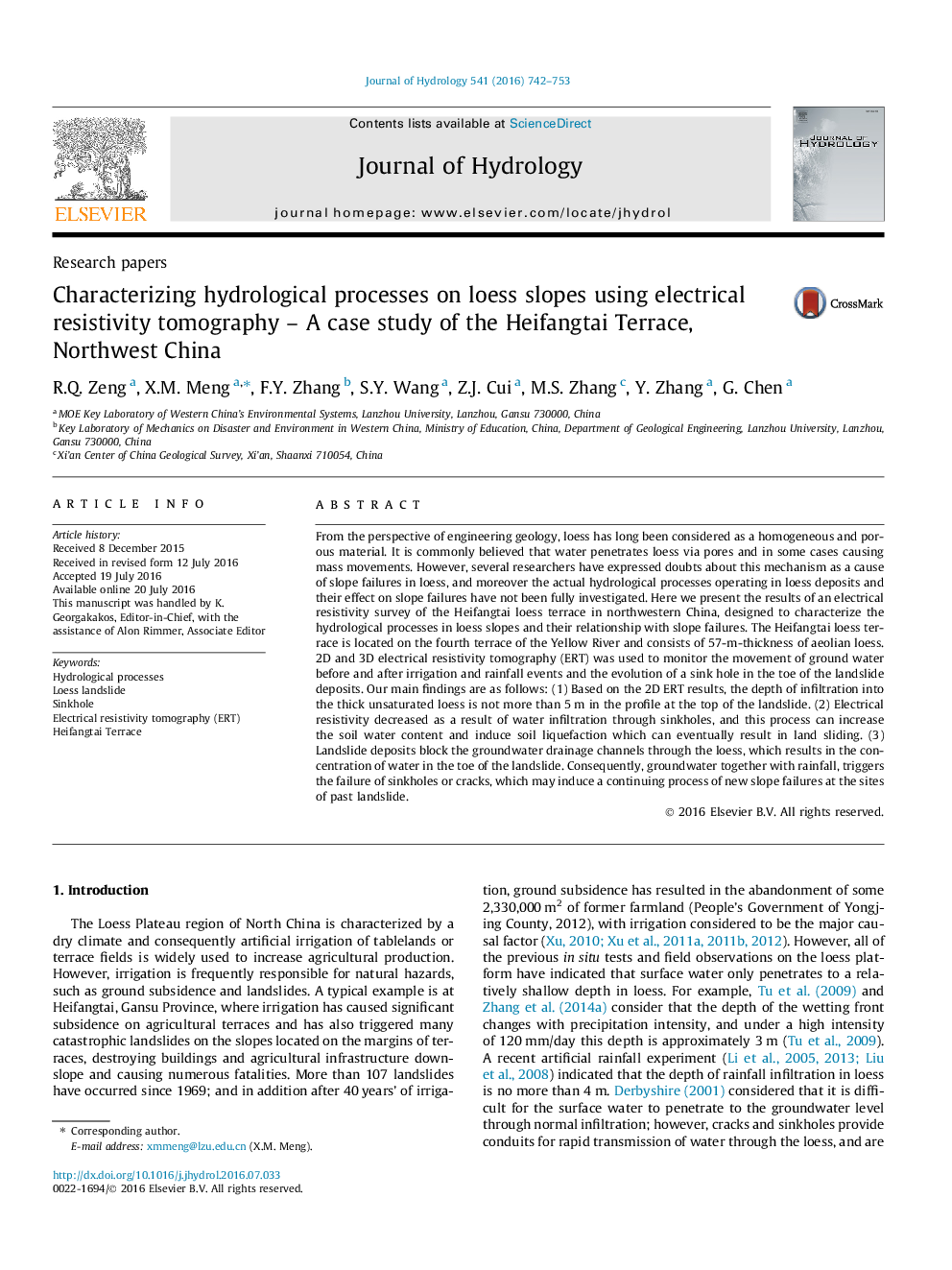| کد مقاله | کد نشریه | سال انتشار | مقاله انگلیسی | نسخه تمام متن |
|---|---|---|---|---|
| 6409408 | 1332870 | 2016 | 12 صفحه PDF | دانلود رایگان |

- We used a 2D time-series ERT to characterize the hydrological processes in a loess platform.
- We used a 3D time-series ERT to characterize the hydrological processes in a loess landslide deposit.
- We interpreted the 3D time-series ERT results in terms of the evolution of a sinkhole in the landslide deposits.
From the perspective of engineering geology, loess has long been considered as a homogeneous and porous material. It is commonly believed that water penetrates loess via pores and in some cases causing mass movements. However, several researchers have expressed doubts about this mechanism as a cause of slope failures in loess, and moreover the actual hydrological processes operating in loess deposits and their effect on slope failures have not been fully investigated. Here we present the results of an electrical resistivity survey of the Heifangtai loess terrace in northwestern China, designed to characterize the hydrological processes in loess slopes and their relationship with slope failures. The Heifangtai loess terrace is located on the fourth terrace of the Yellow River and consists of 57-m-thickness of aeolian loess. 2D and 3D electrical resistivity tomography (ERT) was used to monitor the movement of ground water before and after irrigation and rainfall events and the evolution of a sink hole in the toe of the landslide deposits. Our main findings are as follows: (1) Based on the 2D ERT results, the depth of infiltration into the thick unsaturated loess is not more than 5Â m in the profile at the top of the landslide. (2) Electrical resistivity decreased as a result of water infiltration through sinkholes, and this process can increase the soil water content and induce soil liquefaction which can eventually result in land sliding. (3) Landslide deposits block the groundwater drainage channels through the loess, which results in the concentration of water in the toe of the landslide. Consequently, groundwater together with rainfall, triggers the failure of sinkholes or cracks, which may induce a continuing process of new slope failures at the sites of past landslide.
Graphical AbstractFigure A - Record of 2D ERT changes before and after irrigation and rainfall. The results indicate that the depth of infiltration into the thick unsaturated loess is not more than 5Â m, while the electrical resistivity decreased with water infiltration through sinkholes. This process can increase the water content of the loess and induce soil liquefaction which eventually results in land sliding. Figure B - Record of the evolution of a sinkhole in the toe of the landslide deposits. The result indicate that the landslide deposits block the drainage pipes of the groundwater, causing a concentration of water in the toe of the landslide. As a result, the groundwater and the rainfall trigger the failure of sinkholes or cracks, which may induce new a slope failure at the site of a previous landslide. This is a recurring process.196
Journal: Journal of Hydrology - Volume 541, Part B, October 2016, Pages 742-753